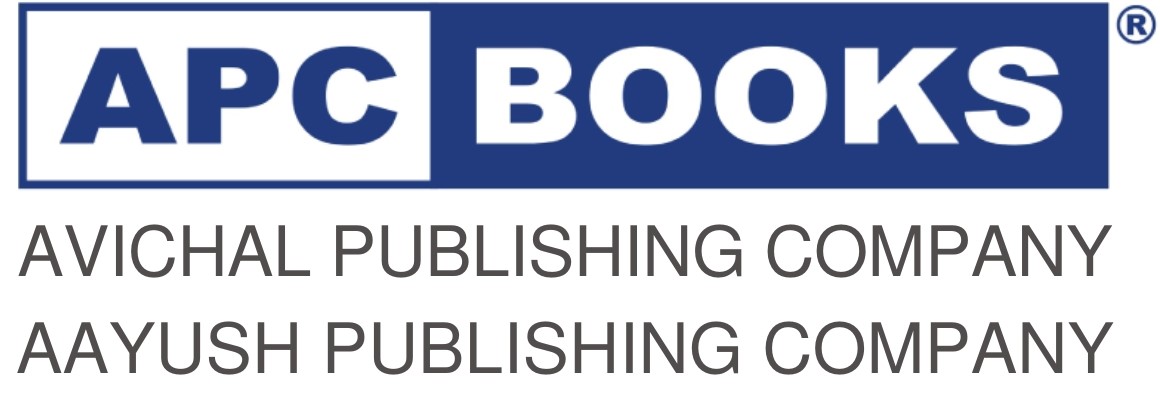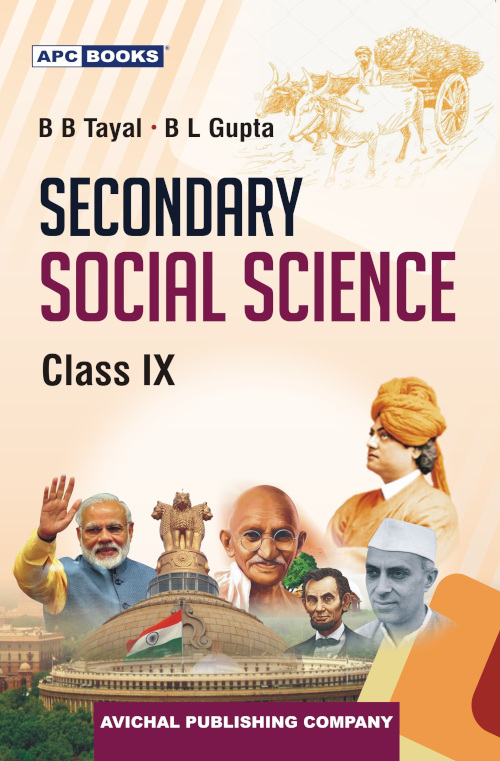About the book
This book covers the entire syllabus of Social Sciences comprising History, Geography, Political Science and Economics. It has been thoroughly revised keeping in mind the latest syllabus of Social Sciences released by the CBSE. Accordingly, additional matter has been appended at required places. The sub-unit, ‘Culture, Identity and Society’ and the unit ‘Disaster Management’ are no longer a part of the sylalbus.
Activities and Multiple-Choice Questions have been given at the end of each chapter. we have the book will be very useful to the students.
The book in your hands is a complete volume of Social Sciences as per CBSE Syllabus for Class IX comprising all four units.
Unit 1: ‘India and the Contemporary World’ has been divided three sub-units:
Sub-unit-1: Events and Processes acquaints students with three important events: (i) the French Revolution, (ii) Socialism in Europe and Russian Revolution, and (iii) Nasizm and the Rise of Hitler. The French Revolution is linked to the growth of liberalism and democracy. There is now a worldwide acceptance of policies of liberalism and democratic elections in the world. Socialism in Europe and the Russian Revolution led to the spread of socialist ideas and the communist movement in the world. This revolution produced a great impact on the mind of many of our national leaders, such as M.N. Roy, Jawaharlal Nehru and Subhash Bose. Communism exposed the exploitative character of capitalism, but it also led to one-party rule and the end of democratic elections in many countries that hastened the collapse of communism and the disintegration of the Soviet Union in 1991. The Nazi ideology meant “the crushing of individual liberty and suppression of human personality, violence at home and unashamed aggression abroad”. This must act as warning to us. We should help people everywhere in the world to build a more democratic society.
Sub-unit II: Livelihoods Economies and Societies concentrates on Pastoralism as a way of life and examines the impact of colonialism on pastoral groups in Africa and India. It also looks at the impact on Forest Societies and the factors that led to tribal revolts in India. An attempt was made to look at the emergence of different forms of farming and peasant societies in the modern world. Students were acquainted with the idea of large scale farming, small scale production and shifting agriculture that operate on different principles in the world.
Sub-Unit III: Culture, Identity and Society evaluates the more difficult problems relating to the issues of culture in the contemporary world. The focus has been on relating the story of cricket and showing how sports are linked up with the politics of power and domination. We have also discussed how clothing is linked to the questions of cultural identity.
Unit 2: “India-land and the People’ has touched the Geography discipline of the Social Sciences.
The chapters in this unit have been divided as per the thematic distribution by NCERT.
The Salient features of thus unit are:
- Simple, easy to understand, reader friendly language for an easy grasp on the subject.
- Updated maps, references, charts and illustrations to ably support the text matter.
- Interesting and useful information’s given in boxes under “Things to Know”.
- Projects and activities included as per CBSE guidelines to enable the students to gather extra information.
- Maps have been provided at the end of chapters for students to locate or identify various regions or self assess their knowledge by the related questions.
Unit 3 enables the students to understand the central theme of Democratic Politics.
The unit has been divided into six chapters. The overview of the contents and salient features of the unit are:
Chapter 1 seeks to develop a historical sense of the spread of democracy. It also analyses the functioning of global institutions, such as the United Nations, the International Monetary Fund and the World Trade Organization.
Chapter 2 explains why democracy has become the most accepted form of government in our times. It also draws a distinction between a democratic and non-democratic government.
Chapter 3 analyses the salient features of the Constitution of India. Our primary objective has been to develop among students a respect for the ideals and values of the Constitution.
Chapter 4 deals with Electoral politics in India. It shall familiarize students with our electoral system and citizens’ increased participation in electoral politics.
Chapter 5 provides an overview of the central government structures, such as the Union Parliament, the President of India, the Prime Minister and the Union Council of Ministers. An emphasis has been placed on parliamentary procedures, such as the Motion of Thanks, the Question Hour, and the Zero Hour. The supreme Court has a special role to play in a Federation like India.
Chapter 6 develops an awareness of our Fundamental Rights. The Supreme Court and the High Courts have opened their doors for the poor and illiterate masses by relaxing some of the legal procedures.
The Unit 4: Understanding Economics has been divided in four chapters. The aim of this unit is to enable the students to understand daily economic activities and some basic challenges facing the economy.
chapter 1 Familiarizes the children with some basic economic concepts such as production and factors of production through an imaginary story of a village Pallampur.
Chapter 2 explains how people become resource and the importance of human resource development through education and health. It also describes economic activities of men and women and the problem of unemployment in the form of non-utilization of human resource.
Chapter 3 analyses the challenge of poverty, its causes and remedial measures undertaken by the government.
Chapter 4 deals with food security and the need for self-sufficiency in foodgrains. It explains the role of government in food security especially with regard to procurement of foodgrains, public distribution system and cooperatives.
About the author
Testimonials




Ruchi –
Better